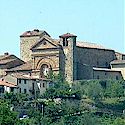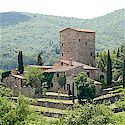The Biblioteca Laurenziana (Laurentian Library), one of the great libraries in Florence, Tuscany, is a part of the Basilica of San Lorenzo, which includes the main cloister, the vestibule with Michelangelo’s staircase leading up to the reading room, the reading room itself and the vestibule that was added to the reading room in the first half of the 19 C. No one interested in architecture, libraries, books or beauty should miss visiting the Biblioteca Medicea Laurenziana during a stay in or near Florence. It’s not just one of the great libraries of Florence – it’s one of the great libraries of the world.
The main cloister (Chiostro dei Canonici) dates to the last phase of the 15 C renovation of the Basilica by the Medici. The Basilica was consecrated by St. Ambrose in 393 AD. In 1418, the Basilica was renovated and enlarged by Filippo Brunelleschi, beginning in 1419. In the corner, at the far end of the cloister, are the stairs leading to the Biblioteca Laurenziana. To the left of the stairs, further along the cloister, is the entrance to the crypt which holds the tombs of Cosimo de’ Medici the Elder and of Donatello.
The library housed the manuscripts collected by Cosimo the Elder (1389-1464) with the help of some of the most famous humanist scholars of the time. The collection expanded further under Lorenzo the Magnificent (1449-1492) and was opened to the public by his nephew, Giulio (1478-1534) who later became Pope Clement VII (1523). The library was designed and built under the guidance Michelangelo (1475-1564) between 1524 and 1534, when Michelangelo left Florence and Pope Clement VII died. Under Cosimo I (1519-1574), the building of the library was resumed and in 1571 it was opened to the public.
Vestibule’s main feature is its verticality: the walls are divided into three sections decorated by double columns, scroll-shaped corbels, gabled niches framed by pilasters which taper downward in an unusual manner.The staircase, originally conceived by Michelangelo to be in walnut, was created in 1559 by Bartolomeo Ammannati in the famous Tuscan pietra serena. Its tripartite structure, including a central flight with elliptically shaped steps, is unique and best viewed from directly in front. Michelangelo intended the Vestibule to be a dark prelude to the brightness of the Reading Room.
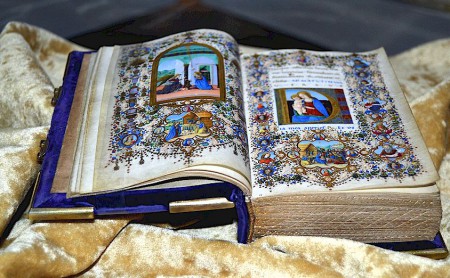
The illuminated manuscript presented by Lorenzo il Magnifico to his daughter Luisa upon her marriage
The Reading Room has a horizontal feel to it, in contrast to the vestibule, and houses two series of wooden benches (plutei) which combine the function of lectern and book-shelf. They were designed by Michelangelo and, according to Giorgio Vasari, are the work of Giovan Battista del Cinque and Ciapino. The collection once kept here was unique for its philological and artistic value. The manuscripts and printed books lay horizontally on the lecterns and shelves, and were arranged by subject (Patristics, Astronomy, Rhetoric, Philosophy, History, Grammar, Poetry, Geography). This display was maintained until the beginning of the 20 C, when the manuscripts were transferred to the vaults below. The printed books were deposited in the Magliabechiana Library, now the Biblioteca Nazionale Centrale di Firenze, in 1783. The ceiling was carved in 1549-1550 by Giovan Battista del Tasso and Antonio di Marco di Giano following earlier drawings by Michelangelo. The construction of the floor in red and white terracotta was carried out starting in 1548 by Santi Buglioni following a design by Tribolo.
About Elena Spolaor
Although Elena was born in Venice, she was brought up in Tuscany and is a historian and frequent contributor to online articles about life in Tuscany and Umbria. Her specialities are Tuscan and Umbrian local history and folklore.
- Web |
- More Posts(58)




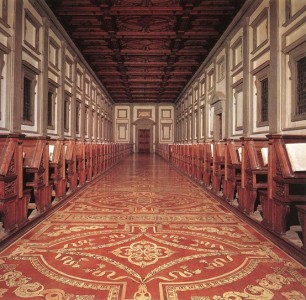
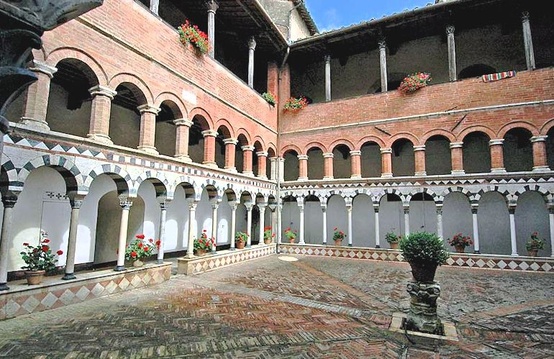
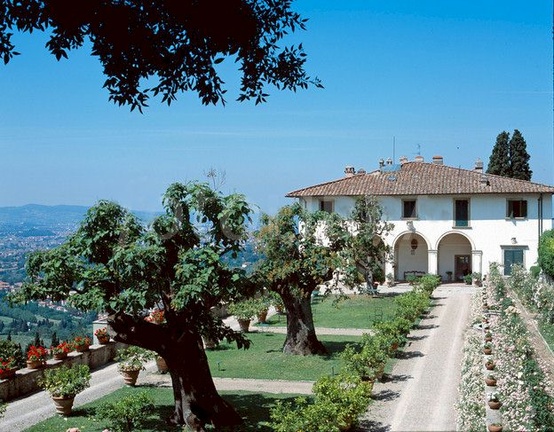
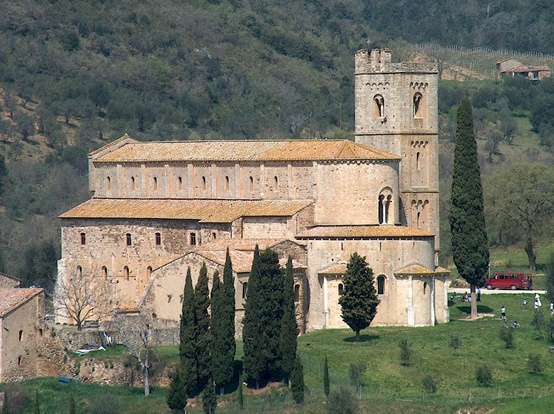
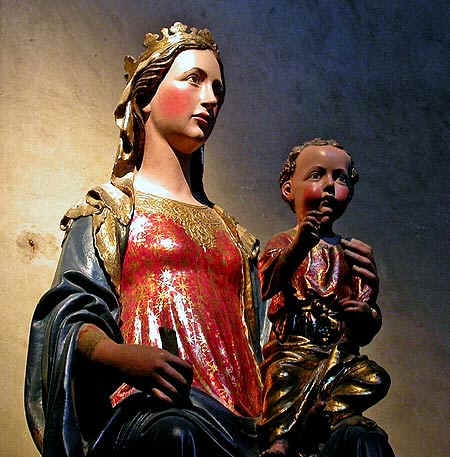
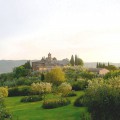
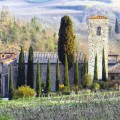
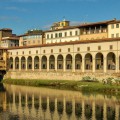
 Posted in
Posted in 